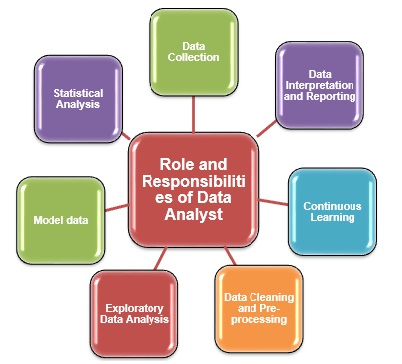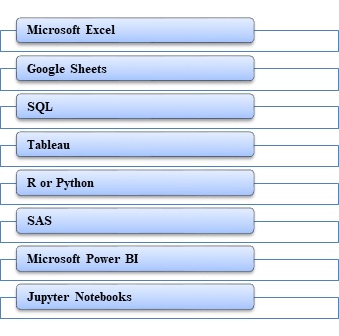
- Big Data Analytics - Home
- Big Data Analytics - Overview
- Big Data Analytics - Characteristics
- Big Data Analytics - Data Life Cycle
- Big Data Analytics - Architecture
- Big Data Analytics - Methodology
- Big Data Analytics - Core Deliverables
- Big Data Adoption & Planning Considerations
- Big Data Analytics - Key Stakeholders
- Big Data Analytics - Data Analyst
- Big Data Analytics - Data Scientist
- Data Analytics - Problem Definition
- Big Data Analytics - Data Collection
- Big Data Analytics - Cleansing data
- Big Data Analytics - Summarizing
- Big Data Analytics - Data Exploration
- Big Data Analytics - Data Visualization
- Big Data Analytics Methods
- Big Data Analytics - Introduction to R
- Data Analytics - Introduction to SQL
- Big Data Analytics - Charts & Graphs
- Big Data Analytics - Data Tools
- Data Analytics - Statistical Methods
- Advanced Methods
- Machine Learning for Data Analysis
- Naive Bayes Classifier
- K-Means Clustering
- Association Rules
- Big Data Analytics - Decision Trees
- Logistic Regression
- Big Data Analytics - Time Series
- Big Data Analytics - Text Analytics
- Big Data Analytics - Online Learning
- Big Data Analytics Useful Resources
- Big Data Analytics - Quick Guide
- Big Data Analytics - Resources
- Big Data Analytics - Discussion
Big Data Analytics - Data Analyst
A Data Analyst is a person who collects, analyses and interprets data to solve a particular problem. A data analyst devotes a lot of time to examining the data and finds insights in terms of graphical reports and dashboards. Hence, a data analyst has a reporting-oriented profile and has experience in extracting and analyzing data from traditional data warehouses using SQL.
Working as a data analyst in big data analytics sounds like a dynamic role. Big data analytics includes analysing large-size and varied datasets to discover hidden patterns, unknown relationships, market trends, customer needs, and related valuable business insights.
In todays scenario, different organizations struggle hard to find competent data scientists in the market. It is however a good idea to select prospective data analysts and train them to the relevant skills to become a data scientist. A competent data analyst has skills like business understanding, SQL programming, report design and Dashboard creation.
Role and Responsibilities of Data Analyst
Below mentioned image incorporate all the major roles and responsibilities of a data analyst −

Data Collection
It refers to a process of collecting data from different sources like databases, data warehouses, APIs, and IoT devices. This could include conducting surveys, tracking visitor behaviour on a company's website, or buying relevant data sets from data collection specialists.
Data Cleaning and Pre-processing
There may be duplicates, errors or outliers in the raw data. Cleaning raw data eliminates errors, inconsistencies, and duplicates. Pre-processing is the process of converting data into an analytically useful format. Cleaning data entails maintaining data quality in a spreadsheet or using a programming language to ensure that your interpretations are correct and unbiased.
Exploratory Data Analysis (EDA)
Using statistical methods and visualization tools, analysis of data is carried out to identify trends, patterns or relationships.
Model Data
It includes creating and designing database structures. Selection of type of data is going to be stored and collected. It ensures that how data categories are related and data appears.
Statistical Analysis
Applying statistical techniques to interpret data, validate hypotheses, and make predictions.
Machine Learning
To predict future trends, classify data or detect anomalies by building predictive models using machine learning algorithms.
Data Visualization
To communicate data insights effectively to stakeholders, it is necessary to create visual representations such as charts, graphs and dashboards.
Data Interpretation and Reporting
To communicate findings and recommendations to decision-makers through the interpretation of analysis results, and preparation of reports or presentations.
Continuous Learning
It includes keeping up to date with the latest developments in data analysis, big data technologies and business trends.
A Data analyst makes their proficiency foundation in statistics, programming languages like Python or R, database fundamentals, SQL, and big data technologies such as Hadoop, Spark, and NoSQL databases.
What Tools Does a Data Analyst Use?
A data analyst often uses the following tools to process assigned work more accurately and efficiently during data analysis. Some common tools used by data analysts are mentioned in below image −

Types of Data Analysts
As technology has rapidly increasing; so, the types and amounts of data that can be collected, classified, and analyse data has become an essential skill in almost every business. In the current scenario; every domain has data analysts experts like data analysts in the criminal justice, fashion, food, technology, business, environment, and public sectors amongst many others. People who perform data analysis might be known as −
- Medical and health care analyst
- Market research analyst
- Business analyst
- Business intelligence analyst
- Operations research analyst
Data Analyst Skills
Generally, the skills of data analysts are divided into two major groups' i.e. Technical Skills and Behavioural Skills.
Data Analyst Technical Skills
- Data Cleaning − A data analyst has proficiency in identifying and handling missing data, outliers, and errors in datasets.
- Database Tools − Microsoft Excel and SQL are essential tools for any data analyst. Excel is most widely used in industries; while SQL is capable of handling larger datasets using SQL queries to manipulate and manage data as per users needs.
- Programming Languages − Data Analysts are proficient in languages such as Python, R, SQL, or others used for data manipulation, analysis, and visualization. Learning Python or R makes me proficient in working on large-size data sets and complex equations. Python and R are popular to work on data analysis.
- Data Visualisation − A competent data analyst must clearly and compellingly present their findings. Knowing how to show data in charts and graphs will help coworkers, employers, and stakeholders comprehend your job. Some popular data visualization tools are Tableau, Jupyter Notebook, and Excel.
- Data Storytelling − Data Analysts can find and communicate insights effectively through storytelling using data visualization and narrative techniques.
- Statistics and Maths − Statistical methods and tools are used to analyse data distributions, correlations, and trends. Knowledge of statistics and maths can guide us to determine which tools are best to use to solve a particular problem, identify errors in data, and better understand the results.
- Big Data Tools − Data Analysts are familiar with big data processing tools and frameworks like Hadoop, Spark, or Apache Kafka.
- Data Warehousing − Data Analysts also have an understanding of data warehousing concepts and work with tools such as Amazon Redshift, Google BigQuery, or Snowflake.
- Data Governance and Compliance − Data Analysts are aware of data governance principles, data privacy laws, and regulations (Like GDPR, and HIPAA).
- APIs and Web Scraping − Data Analysts have expertise in pulling data from web APIs and scraping from websites using libraries like requests (Python) or BeautifulSoup.
Behavioural Skills
- Problem-solving − A data analyst can understand the problem that needs to be solved. They identify patterns or trends that might reveal data. Critical thinking abilities enable analysts to focus on the types of data, identify the most illuminating methods of analysis, and detect gaps in their work.
- Analytical Thinking − The ability to evaluate complex problems, divide them into smaller components, and devise logical solutions.
- Communication − As a data analyst, communicating ideas is essential. Data analysts need solid writing and speaking abilities to communicate with colleagues and stakeholders.
- Industry Knowledge − Knowing your industry like health care, business, finance, etc. can help you to communicate with one another.
- Collaboration − Working well with team members, exchanging expertise, and contributing to a collaborative environment in which ideas are openly exchanged.
- Time Management − Prioritizing work, meeting deadlines, and devoting time to various areas of data analysis projects.
- Resilience − Dealing effectively with setbacks or failures in data analysis initiatives while remaining determined to find solutions.
Role of Data Analysts in Todays Data-Driven World
Data analysts are essential to today's data-driven world, they play a vital role on many levels; some of the reasons are as follows −
- Strategic Decision-Making − Knowing your industry like health Data analysts lays the framework for strategic decision-making by identifying trends and insights that can inform corporate plans and improve outcomes.
- Improving Efficiency − Data analysts assist firms in streamlining processes, lowering costs, and increasing productivity by discovering operational inefficiencies.
- Enhancing Customer Experiences − Analyzing customer data enables organizations to better understand customer habits and preferences, resulting in better products and services.
- Risk Management − Data analysis assists firms in identifying potential risks and obstacles, allowing them to develop mitigation solutions.
- Business Intelligence − Analysing raw data into relevant information and visualizations helps stakeholders to understand complex data. They produce dashboards, reports, and presentations for data-driven decision-making across a business.
- Predictive Analytics − Based on historical data, data analysts predict future patterns and outcomes using statistical modelling and machine learning. This helps firms anticipate customer wants, optimize resource allocation, and establish proactive initiatives.
- Continuous Improvement − Data analysts assess and monitor data analysis processes and methods to improve accuracy, efficiency, and relevance. They keep up with new technology and best practices to better data analysis.